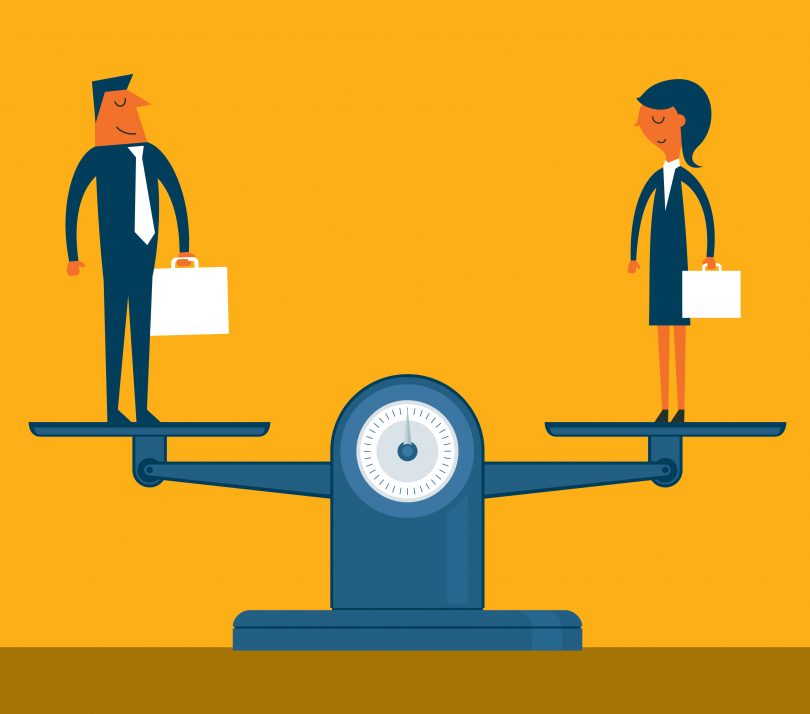Gender stereotypes started from birth. We were not born with it, but rather programmed into believing it exists. Action figures and toy cars for boys and dolls and make up for girls. Male and female children are exposed to colours that reflect their genders such as blue for boys and pink for girls. In fact, the pink Power Ranger was the only female character in the famous children’s show.
Gender stereotypes or gender bias continue in many work settings today, including starting and developing careers, pay gap between genders, receiving promotions and many more. Though we are over a decade into the 21st century, gender equality is still seeing flaws and one-sided in the workplace. The most obvious gender bias examples are lack of women in leadership roles and gender pay gap.
The Australian Institute of Company Directors (AICD) recent quarterly gender diversity progress report shows 74.6 per cent of ASX 200 directorships are held by men. The 30% Club, which aims to have 30 per cent of women on ASX 200 boards by the end of 2018, is currently seeing progress with 66 companies (25.4 per cent female on boards) already reached the target.
We are seeing progress in women representation in the workforce now, but gender pay gap is still a major issue that still has a long way to go.
“Unfortunately, this is still the case and the gap will probably not be closed until 2090,” said Economic Security for Women public officer, Sharen Page.
Australia’s gender pay gap, according to a recent research by the Workplace Gender Equality Agency (WGEA) still sees women earning on average $251.20 per week less than men, that is 15.3 per cent Australia’s full-time pay gap.
For the past two decades, the gender pay gap has been stuck between 15 and 19 per cent. The lowest gap was in November 2004 at 14.9 per cent whereas the highest was in November 2014 at 18.5 per cent.
[infogram id=”e17afcc4-fb63-4559-8bec-7be22fd30ca0″ prefix=”DZq” format=”interactive” title=”Gender pay gap: May 1997 – May 2017″]Data source: ABS (2017), Average Weekly Earnings, May 2017, http://www.abs.gov.au/ausstats/abs@.nsf/mf/6302.0
The gender pay gap also varies in industries. Australia’s workforce is highly segregated by occupation and industry, with men dominating managerial ranks, trades and technical roles and women dominating administrative, health and caring roles.
Financial and Insurance Services industry has the highest pay gap of 29.6 per cent, followed by Professional, Scientific and Technical Services with 24.3 per cent difference. These two industries also have higher percentage in hiring full-time male labour, i.e. 41.3 percent (40.4 per cent women) and 51 per cent (27 per cent women) respectively.
On the other hand, the industry with lowest pay gap is Public Administration and Safety with 5.9 per cent which hired 34.6 per cent full-time female employees and 46.2 per cent male employees.
[infogram id=”3c3b5d1c-cf2f-4699-8415-f46315c59615″ prefix=”NQ9″ format=”interactive” title=”GPG by industry”]Data source: ABS (2017), Average Weekly Earnings, May 2017, http://www.abs.gov.au/ausstats/abs@.nsf/mf/6302.0
Why does gender pay gap exists?
“Expectations about women’s responsibilities in the home and the types of jobs that are most suitable mean they do not participate in the workforce on equal terms with men,” says Dr Elizabeth Hill, senior lecturer from University of Sydney.
Lack of work flexibility and women spending more time outside of the workforce to accommodate other responsibilities impact greatly on career progression and opportunities. Moreover, data from the Australian Bureau of Statistics and WGEA both show gender pay gap favouring full-time working men over full-time working women in every industry and occupational category in Australia. Hence why we see the rate of women working in part-time jobs are much higher than that of men, i.e. women constitute 68.4 per cent of all part-time employees.
Economic Security for Women’s campaign, Equal Pay Day, is one of the efforts to spread awareness in order to advocate change in this matter.
“We engage actively with the Australian Government on policy issues as part of a better more informed and representative dialogue between women and government,” says Ms Page.
“The benefit in closing the gender pay gap will be a significant step forward to achieving gender equality.”

